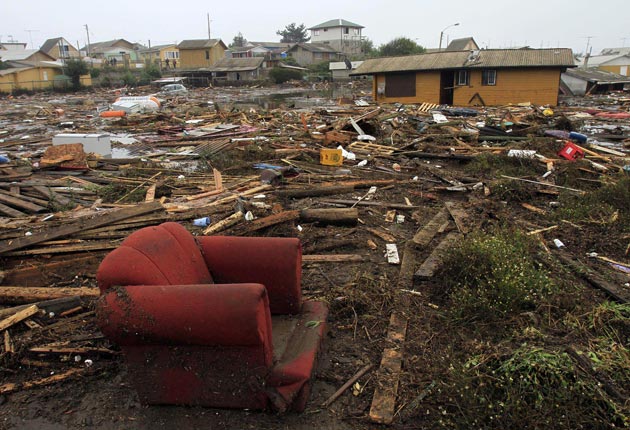Why tsunamis were smaller than expected

It is fortunate that one of the biggest earthquakes in recent history has generated only relatively small tsunamis that crossed the Pacific Ocean from Chile to Japan. This is almost certainly because the rupture that generated the earthquake occurred quite deep in the Earth's crust.
The size of a tsunami, which means "harbour wave" in Japanese, is directly related to the volume of water that is displaced during the movement of the seabed during an earthquake. The bigger the amount of water that is moved up or down, the bigger the tsunami that is likely to be created.
Roger Musson, an earthquake scientist at the British Geological Survey in Edinburgh, explained that there are two factors to consider. The first is whether or not the movement of the seabed occurred in an area of shallow water – the shallower the water above the rupture, the smaller the tsunami. The second is how deep under the seabed the rupture occurred, with shallow quakes causing a greater displacement of water.
"In this case I suspect the relatively small size of the tsunamis travelling across the Pacific Ocean was because the rupture occurred relatively deep in the ground," Dr Musson said.
"If it had occurred at the top of the slope where the two tectonic plates meet we would have got a much bigger tsunami," he added.
Many Pacific islands in the path of the Chilean tsunamis have well-drilled emergency preparations for the risk of tsunamis.
For instance, Robinson Crusoe island, which is part of the Juan Fernandez archipelago 400 miles off the coast of Chile, has a concrete road running up a hill from the shore where residents are trained to flee when a tsunami warning is issued.
Subscribe to Independent Premium to bookmark this article
Want to bookmark your favourite articles and stories to read or reference later? Start your Independent Premium subscription today.

Join our commenting forum
Join thought-provoking conversations, follow other Independent readers and see their replies